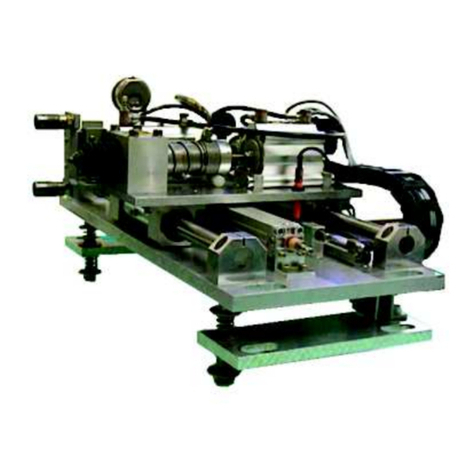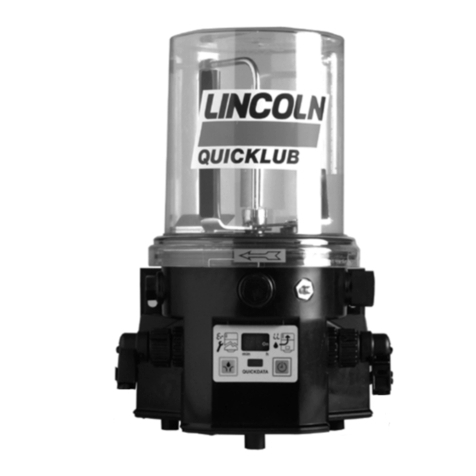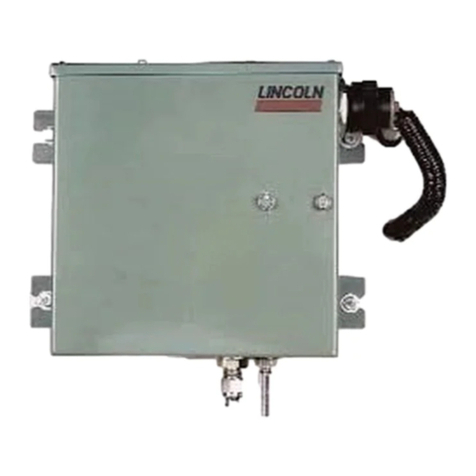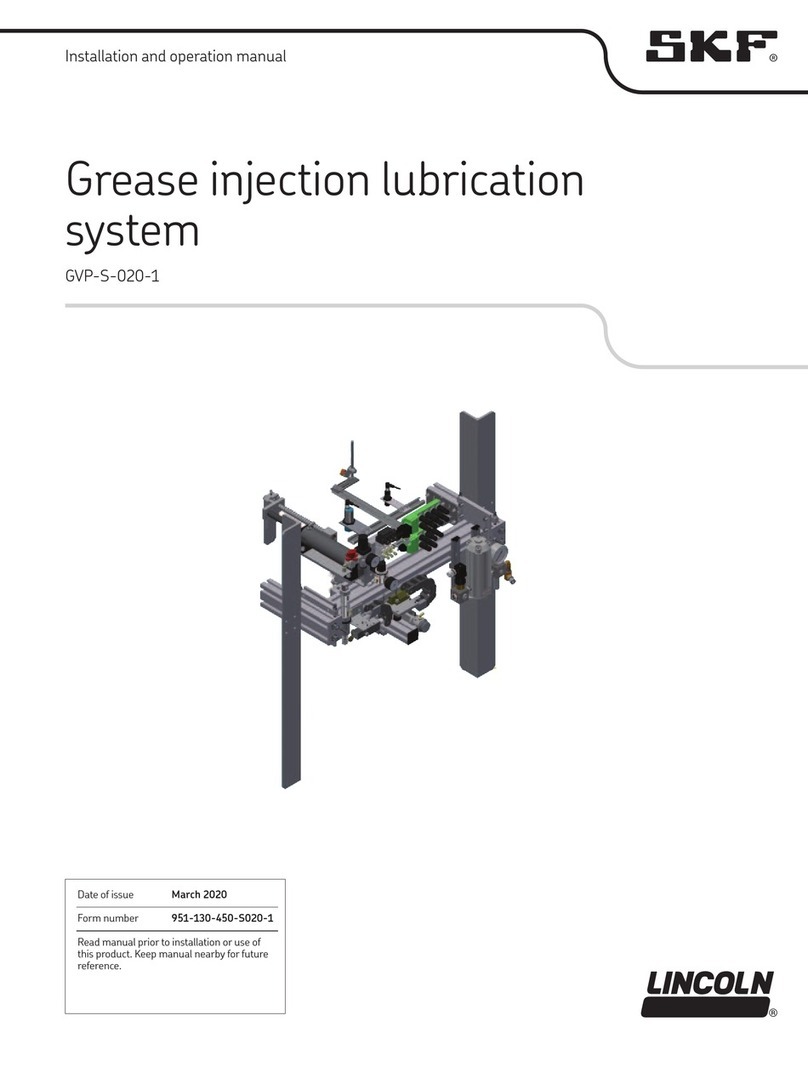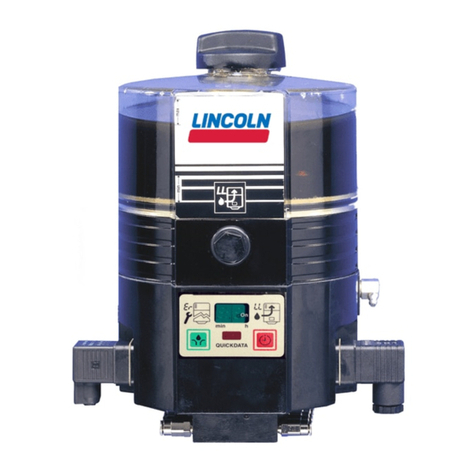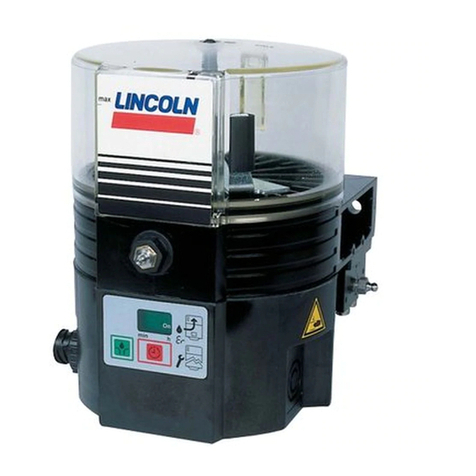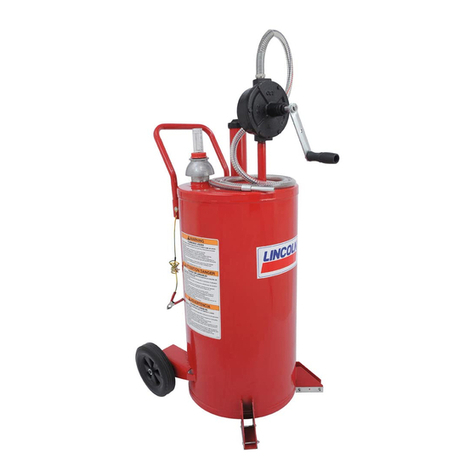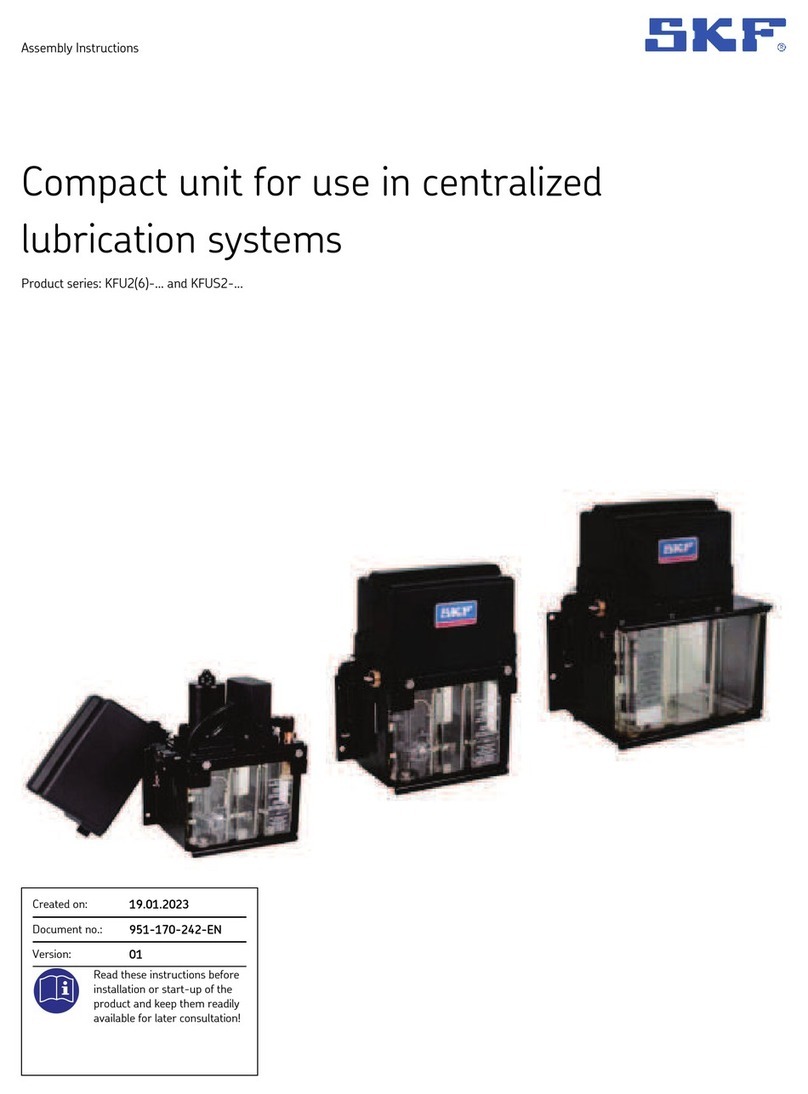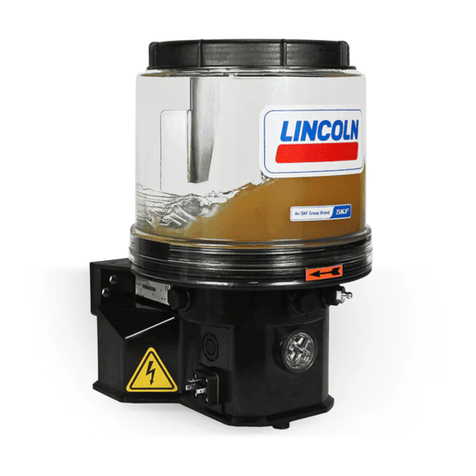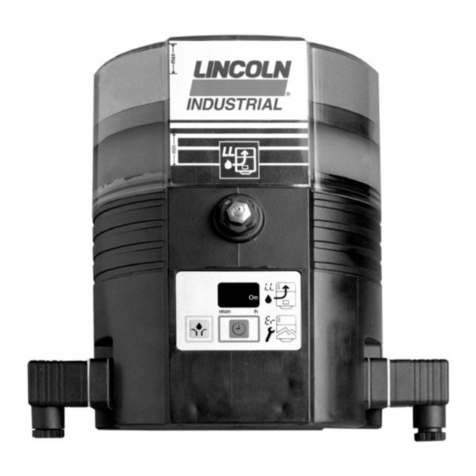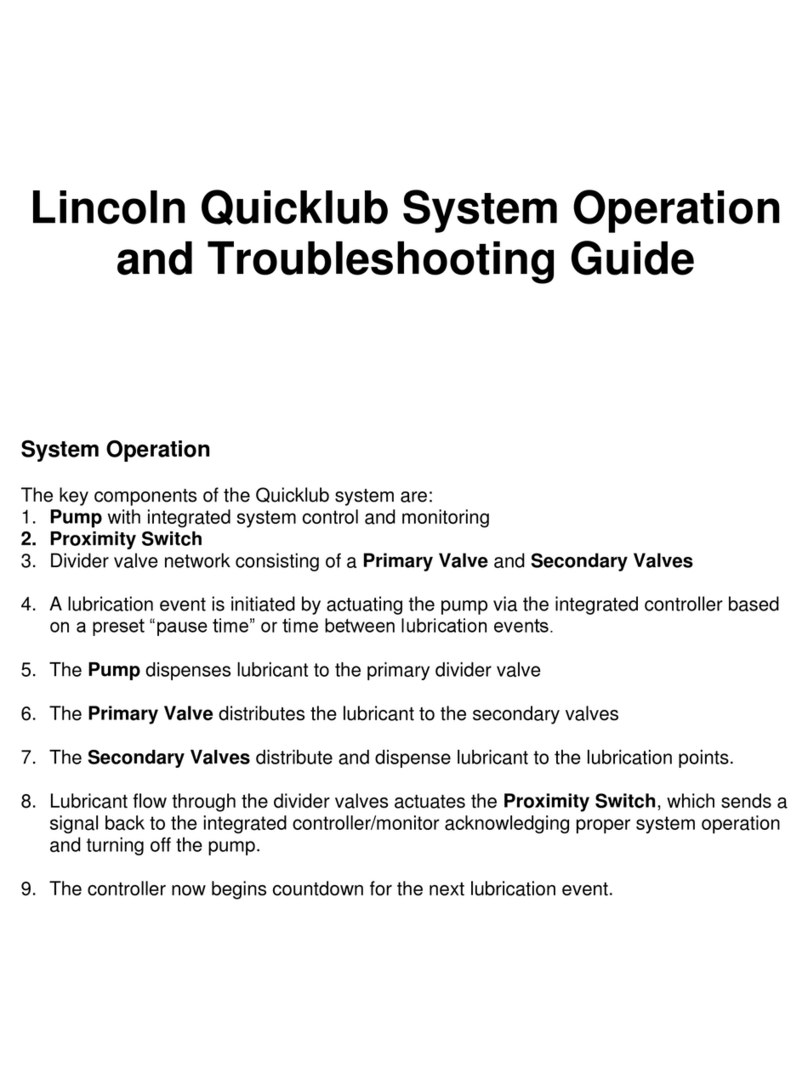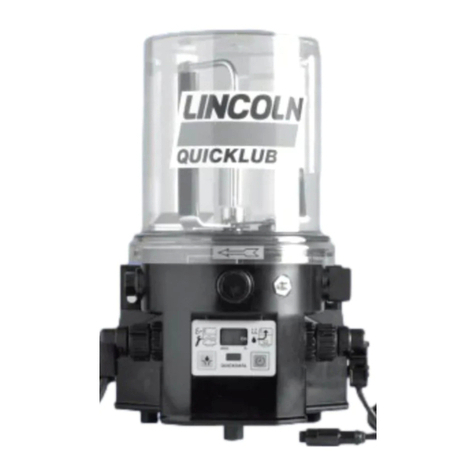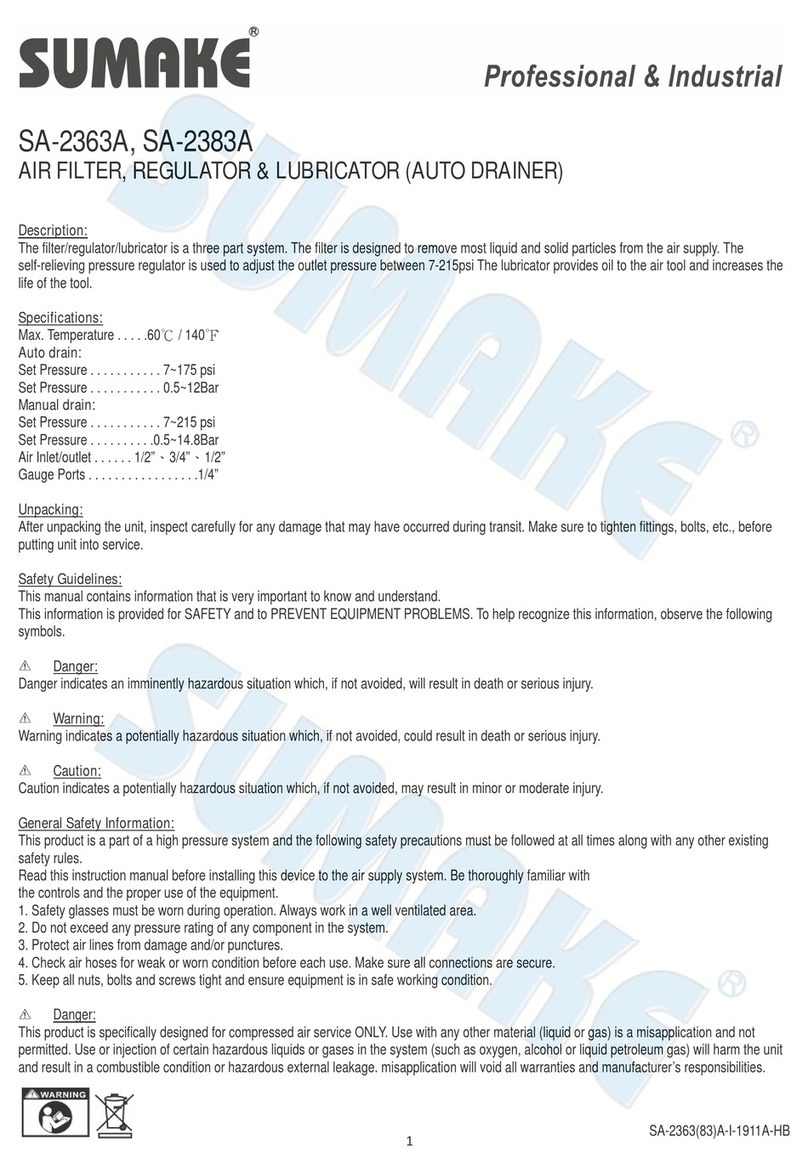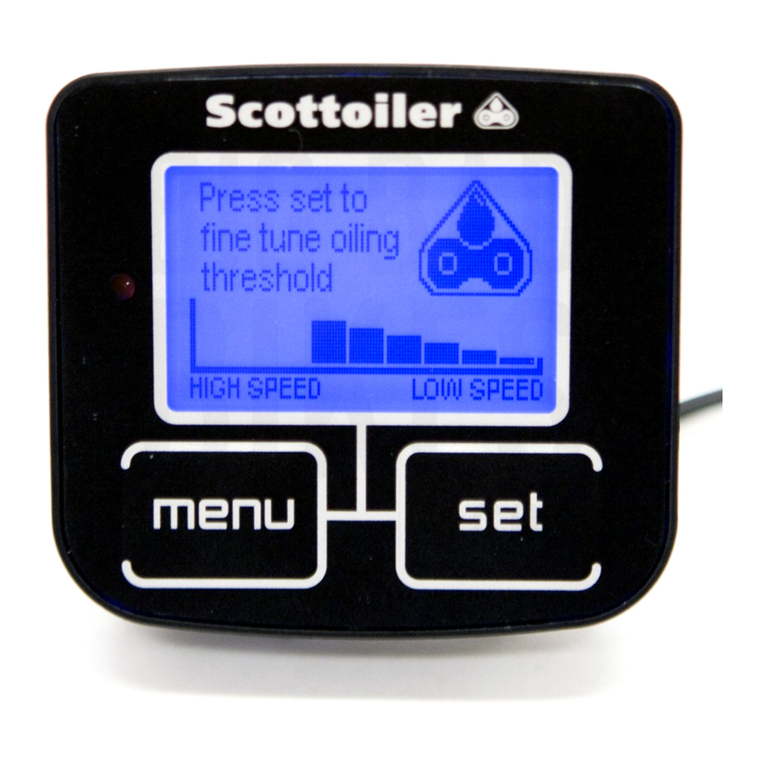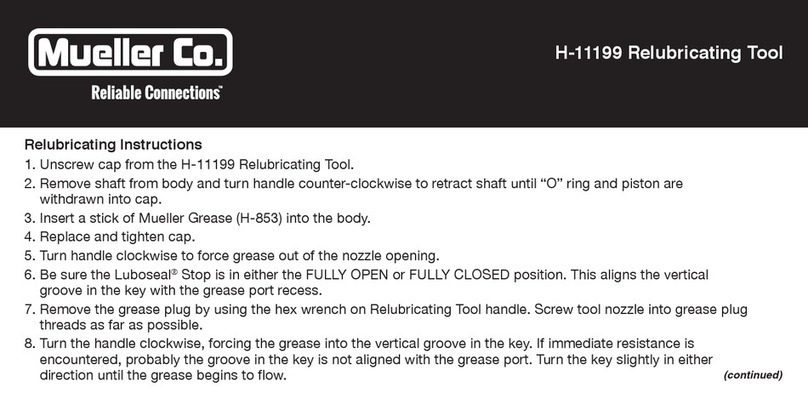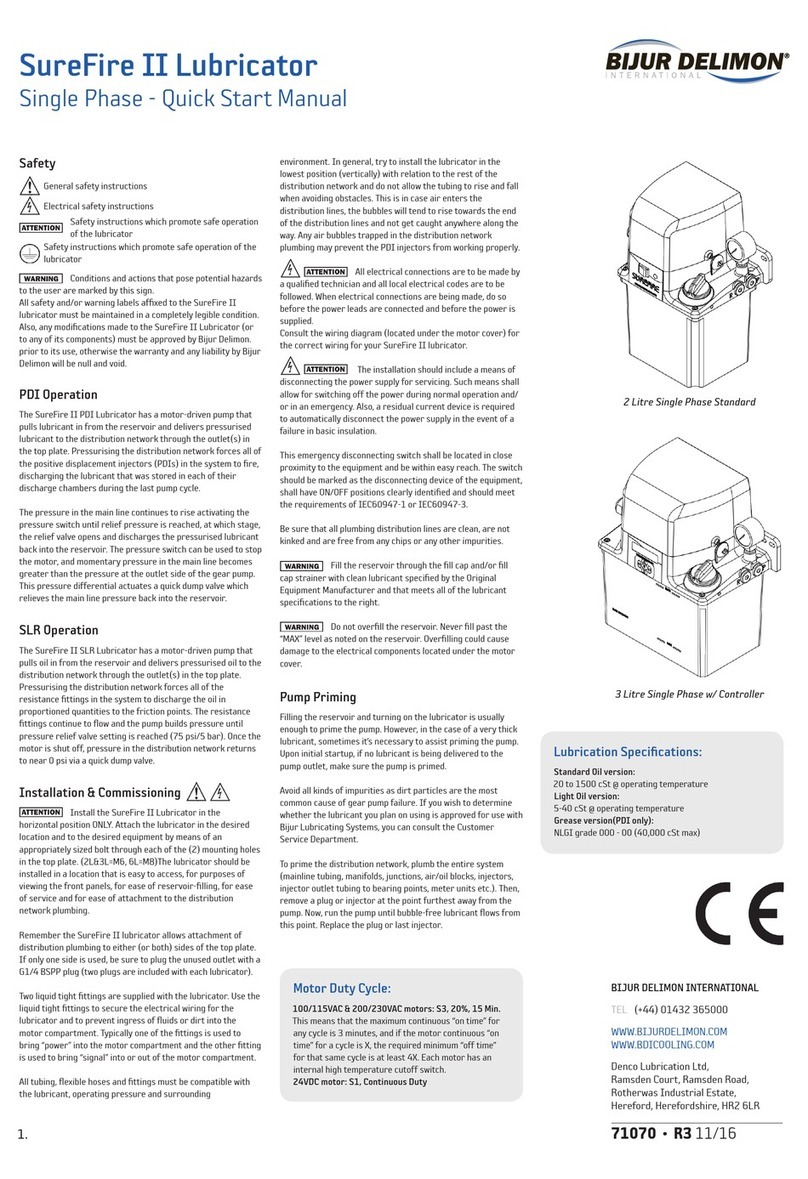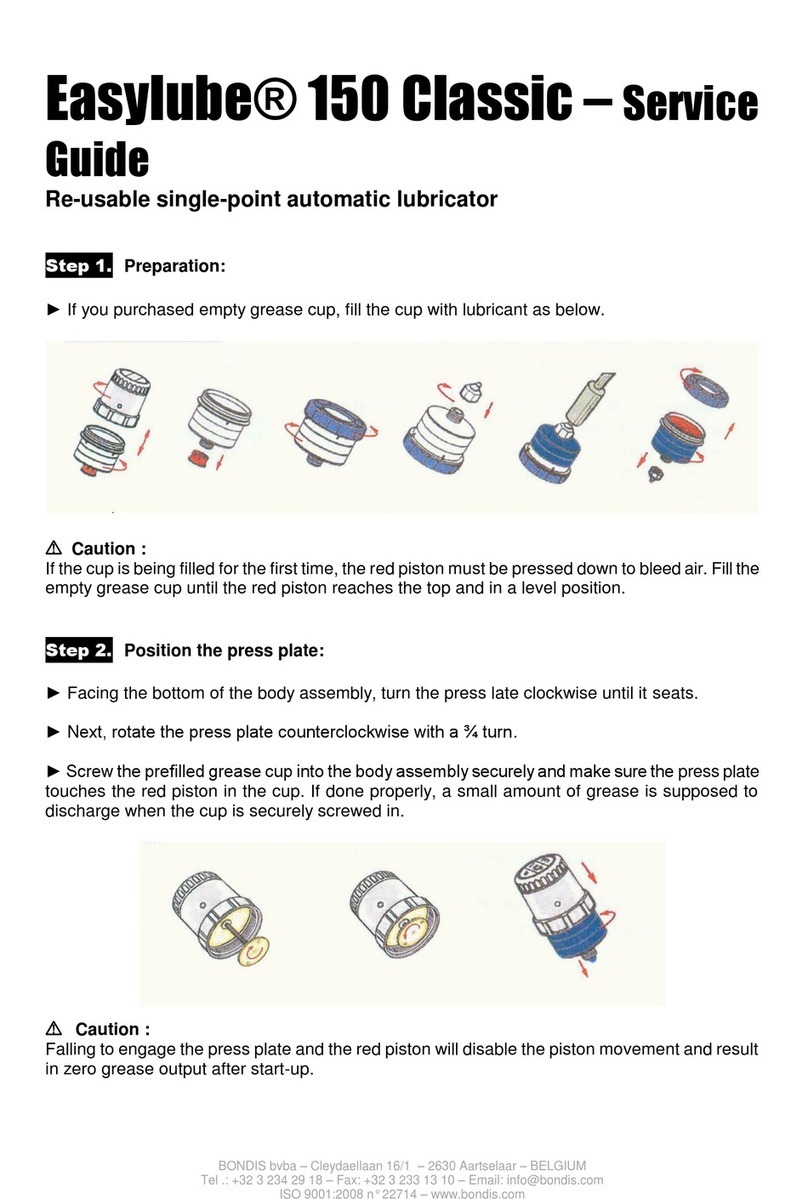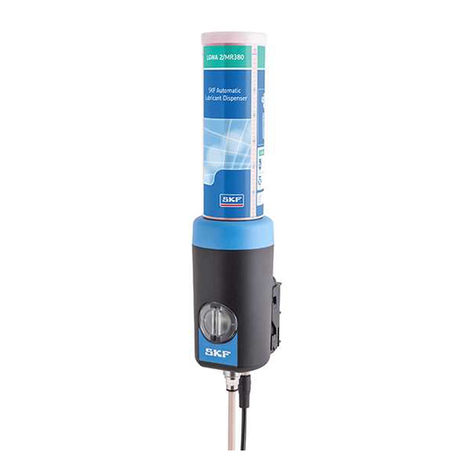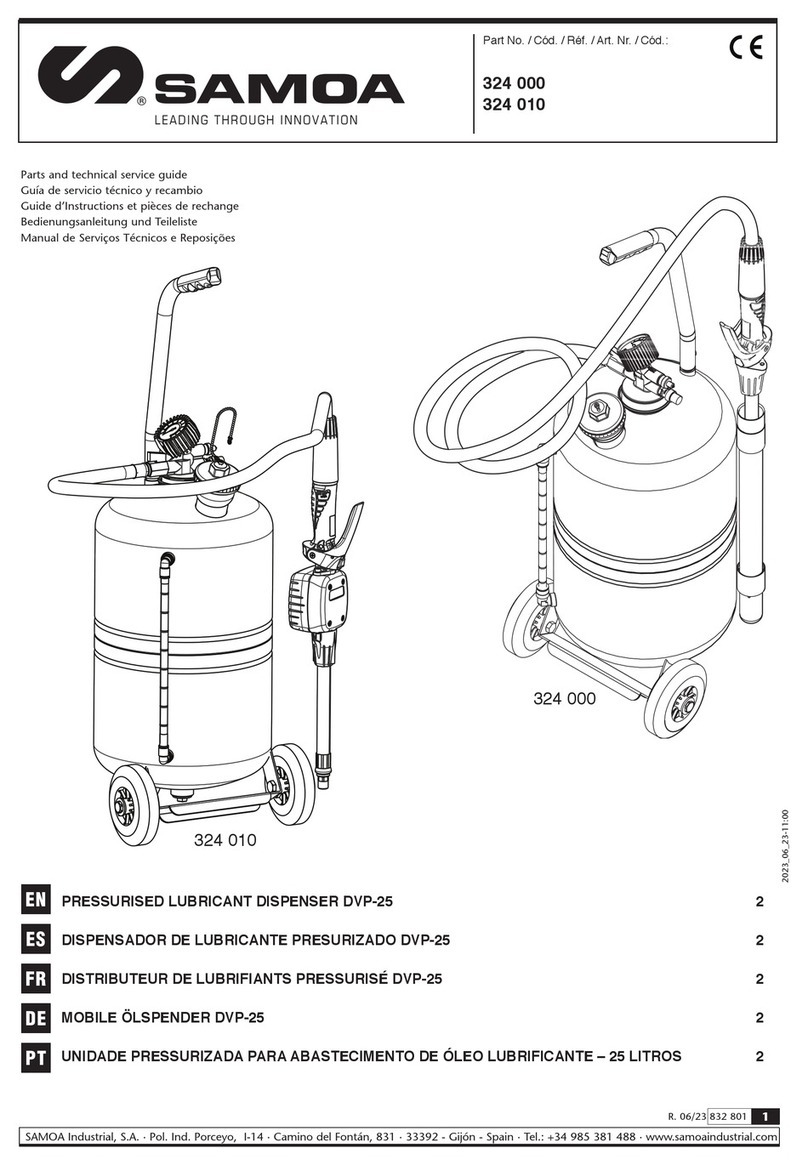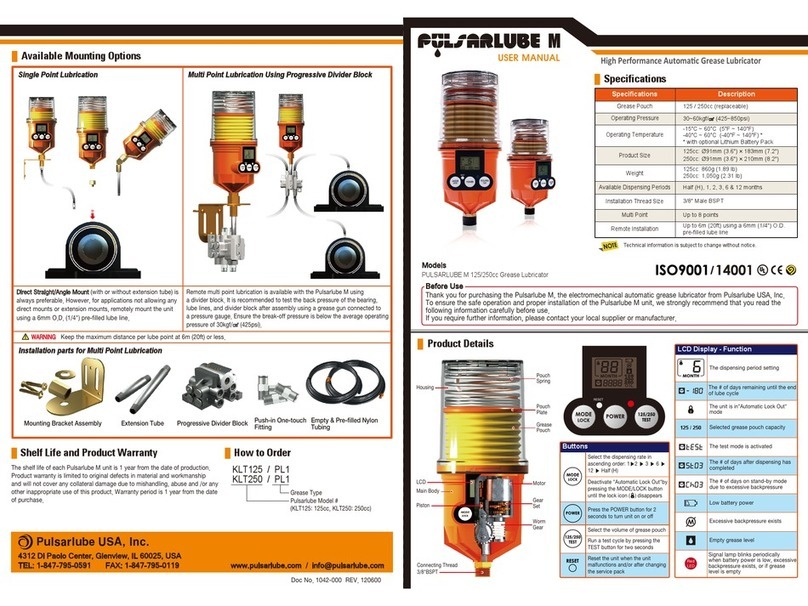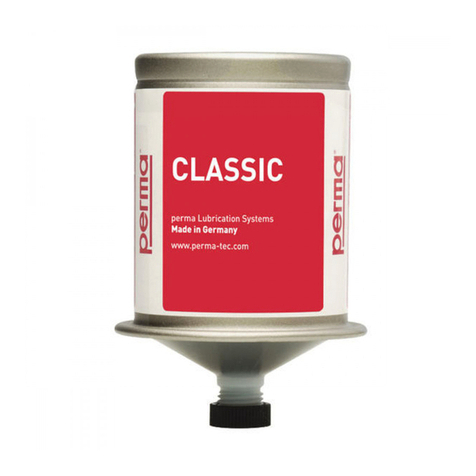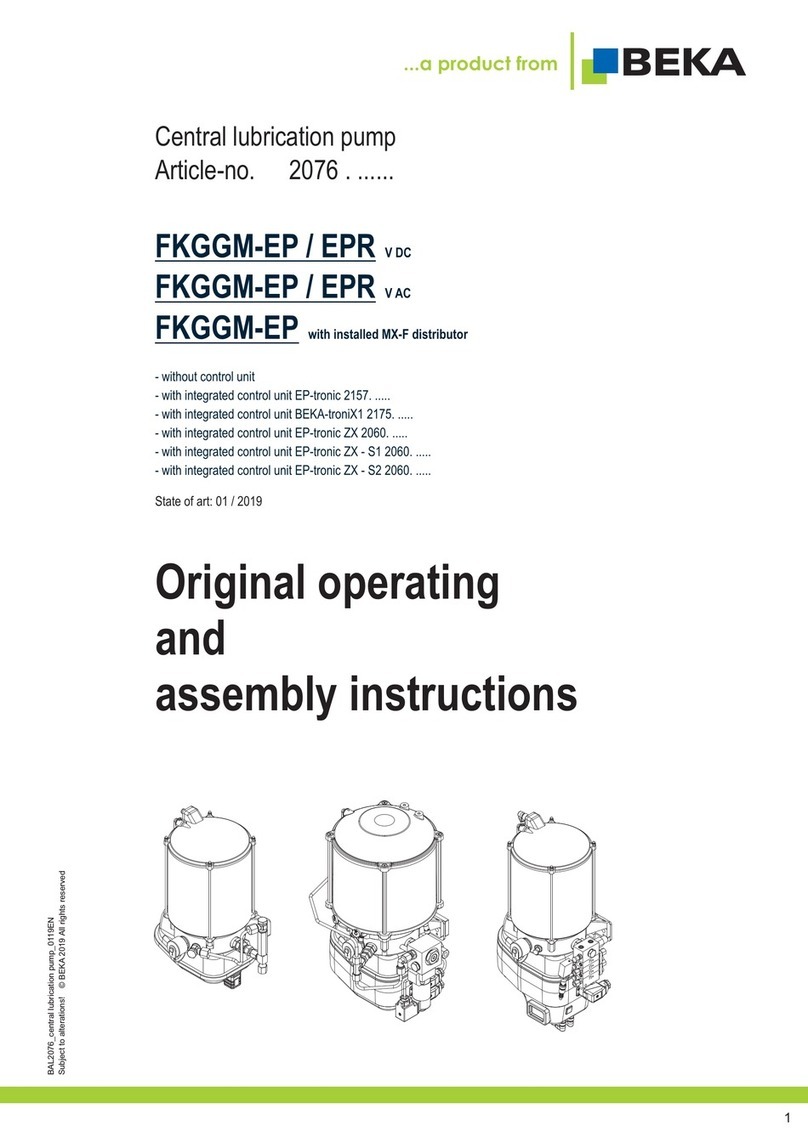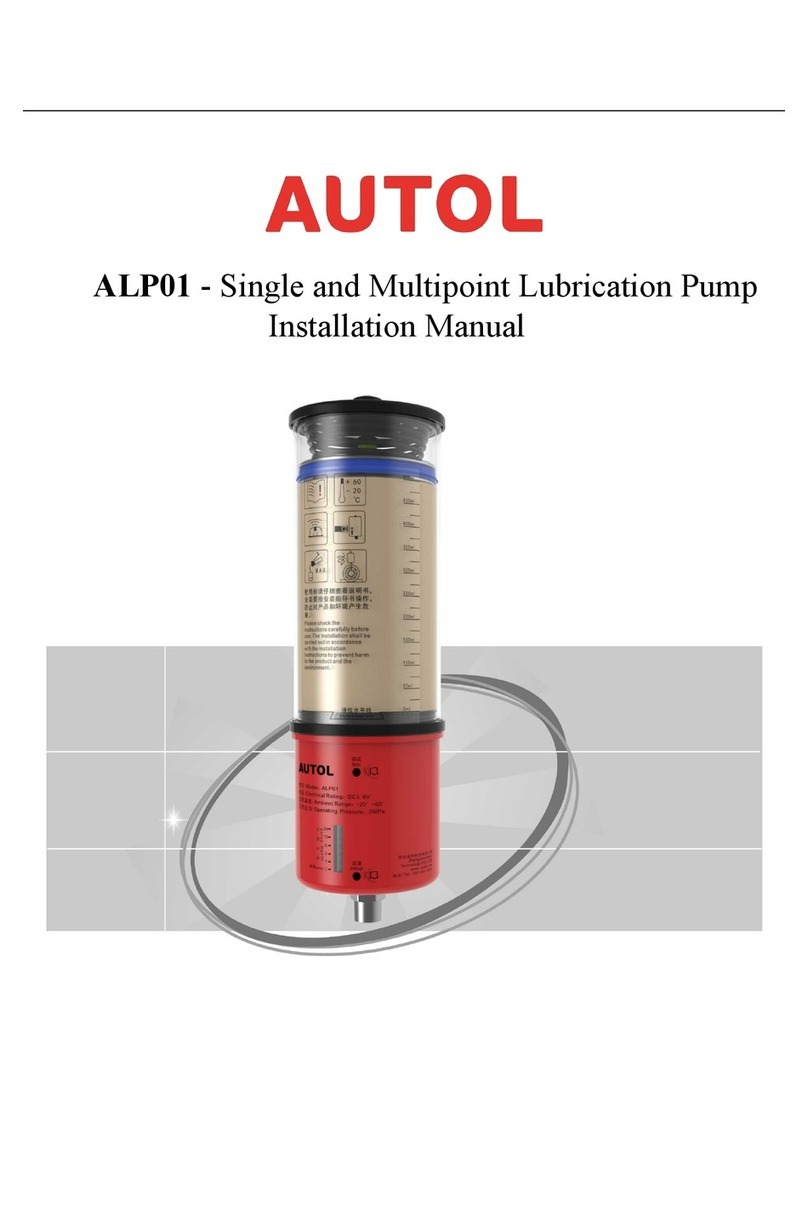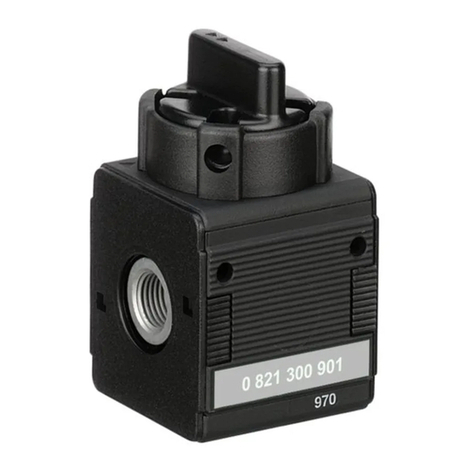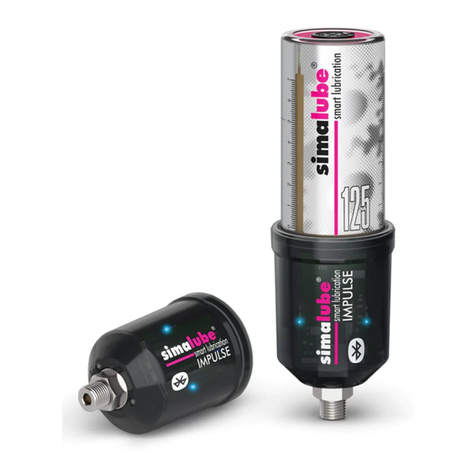
Page
Section - B5 - 38
Form 403446APRIL-2004
MODELS 4100, 4105, 4110
FLUIDEVACUATIONAND
DISPOSAL SYSTEM
INSTALLATION INSTRUCTIONS
DESCRIPTION
The Fluid Evacuation and Disposal System provides a
clean, safe way to dispose of waste fluids. The system
features a U.L. Approved corrosion resistant aluminum
double diaphragm pump that creates a powerful suction to
evacuate waste fluids and transfer them through a enclosed
system to a remote storage tank.
The system can be connected by kits to evacuate waste oil
from rolling drain pans, portable oil drain containers and
differentials and transaxles. The pump is air operated and
can be mounted on any convenient wall surface. One basic
system can be connected with additional hardware to serve
multiple service bays.
MODEL 4100
BASICFLUIDEVACUATIONSYSTEM
System includes pump, hoses and all necessary waste oil
and air line connections.
MODEL 4105
PORTABLEDRAINKIT
Kit includes quick disconnect couplings and all mounting
hardware for connection to portable waste oil drains.
MODEL4110
DIFFERENTIALANDTRANSAXLEKIT
Kit includes hose, fittings and interchangeable wands for all
car makes and models that allow fluid evacuation through sight
plug openings.
OWNER/OPERATOR RESPONSIBILITY
It is the owner/operator responsibility to properly use and
maintain this equipment.
The instructions and warnings contained in this manual shall
be read and understood by the owner/operator prior to
operating this equipment.
If an owner/operator does not understand English, the
contents of this manual shall be explained in the owner/
operator’s native language to assure the owner/operator
comprehends.
It is the owners/operators responsibility to maintain the
legibility of all warning and instruction labels.
The owner/operator shall retain this manual for future refer-
ence to important warnings and installation instructions.
INSTALLATION
The Fluid Evacuation and Disposal System installation and
use must be in accordance with the Flammable and Com-
bustible Liquids Code (NFPA 30) and Automotive and Marine
Service Station Code (NFPA 30A) and must comply with all
local, state and Federal codes.
Also, the United States Government safety standards have
been adopted under the Occupational Safety and Health Act.
These standards should be consulted, particulary the
General Standards, Part 1910, and the Construction Stan-
dard, Part 1926.
GROUNDING
To reduce the risk of static electrical sparking, the system
must be grounded. Refer to your local, state, federal electri-
cal codes for detailed grounding instructions that are applica-
ble to your area and type of equipment.
FAILURETOHEEDTHEFOLLOWINGWARNINGSINCLUDING FAILURETOGROUNDEQUIPMENT,MISUSE, OVER
PRESSURIZING,MODIFYINGPARTS, EVACUATINGINCOMPATIBLEFLUIDS,ORUSINGWORNORDAMAGEDPARTS,
MAYRESULTIN EQUIPMENTDAMAGEAND/OR SERIOUSPERSONALINJURY, FIRE,EXPLOSION,OR PROPERTY
DAMAGE.
• Make sure the pump and all other equipment used or located in the pumping area are grounded.
• Do not use the system if any static sparking or electrical shock occurs. Stop the evacuation immediately and do not
use the system until the problem is corrected.
• Do not exceed the stated maximum working pressure of the pump or of the lowest rated component in your
system. Do not alter or modify any part of this equipment.
• Do not attempt to repair or disassemble the equipment while the system is operating.
• Make sure all connections are securely tightened before using this equipment.
• Always read and follow the fluid manufacturer’s recommendations regarding fluid compatibility, and the use of
protective clothing and equipment.
• Check all equipment regularly and repair or replace worn or damaged parts immediately.
• Never place your hand on or near the pump suction inlet.

